Table of Contents
Learning wild animals vocabulary is important for beginners to improve their English skills. It helps you identify different animals and understand their names in daily conversations or reading.
By building this vocabulary, you can describe animals, talk about wildlife, and enjoy learning English in easy way. Start describing wild animal words today!
What Are Wild Animals?
Wild animals are animals that live independently in nature without relying on humans for their needs. They survive by finding their own food, water, and shelter in their natural habitats.
These animals are not domesticated or trained to live with humans and have behaviors and instincts adapted to their environment. Wild animals play important roles in maintaining the balance of ecosystems.
Types of Wild Animals:
- Mammals
- Birds
- Reptiles
- Amphibians
- Fish
- Insects
- Arachnids
Animals Types with Their Description
1. Mammals
Mammals are warm-blooded vertebrates with fur or hair. Most give live birth and nurse their young with milk.
- Big Cats: Lions, tigers, leopards, cheetahs.
- Ungulates: Elephants, zebras, deer, bison.
- Primates: Gorillas, chimpanzees, orangutans, monkeys.
- Marine Mammals: Whales, dolphins, seals, sea lions.
- Carnivores: Wolves, bears, hyenas, foxes.
- Small Mammals: Raccoons, rabbits, porcupines, weasels.
2. Birds
Birds are feathered vertebrates, most of which can fly. They lay eggs and have beaks.
- Raptors: Eagles, hawks, owls, falcons.
- Waterfowl: Ducks, geese, swans.
- Songbirds: Robins, sparrows, nightingales.
- Flightless Birds: Ostriches, emus, penguins.
- Colorful Birds: Parrots, peacocks, toucans.
3. Reptiles
Reptiles are cold-blooded vertebrates with scaly skin. Most lay eggs and live on land or water.
- Crocodilians: Crocodiles, alligators, caimans.
- Lizards: Iguanas, geckos, chameleons, Komodo dragons.
- Snakes: Pythons, cobras, rattlesnakes, anacondas.
- Turtles: Sea turtles, tortoises, terrapins.
4. Amphibians
Amphibians are cold-blooded vertebrates that typically live both on land and in water. They have moist, permeable skin.
- Frogs: Tree frogs, poison dart frogs, bullfrogs.
- Toads: Common toads, cane toads.
- Salamanders: Axolotls, newts, tiger salamanders.
- Caecilians: Limbless, worm-like amphibians.
5. Fish
Fish are cold-blooded aquatic vertebrates with gills, fins, and scales.
- Cartilaginous Fish: Sharks, rays, skates.
- Bony Fish: Salmon, trout, tuna, clownfish.
- Deep-Sea Fish: Anglerfish, gulper eel, lanternfish.
- Freshwater Fish: Catfish, piranhas, cichlids.
6. Insects
Insects are six-legged arthropods, often with wings and exoskeletons.
- Flying Insects: Butterflies, dragonflies, bees, wasps.
- Ground-Dwelling Insects: Ants, beetles, cockroaches.
- Predatory Insects: Praying mantis, assassin bugs.
- Parasitic Insects: Fleas, lice, mosquitoes.
7. Arachnids
Arachnids are eight-legged arthropods that often live on land.
- Spiders: Tarantulas, black widows, orb-weavers.
- Scorpions: Emperor scorpions, deathstalker scorpions.
- Mites and Ticks: Parasitic species that feed on blood.
- Harvestmen: Commonly known as daddy longlegs.
List of Wild Animals
- Lion
- Tiger
- Leopard
- Cheetah
- Jaguar
- Snow Leopard
- Elephant
- Zebra
- Giraffe
- Rhinoceros
- Hippopotamus
- Deer
- Antelope
- Gorilla
- Chimpanzee
- Orangutan
- Baboon
- Macaque
- Gibbon
- Wolf
- Fox
- Hyena
- Jackal
- Bear (Grizzly, Polar, Black)
- Dolphin
- Whale (Blue, Humpback, Orca)
- Sea Lion
- Seal
- Walrus
- Rabbit
- Porcupine
- Hedgehog
- Raccoon
- Otter
- Mongoose
- Beaver
- Capybara
- Squirrel
- Rat
- Mouse
- Kangaroo
- Koala
- Wallaby
- Wombat
- Opossum
- Eagle
- Hawk
- Falcon
- Owl
- Vulture
- Kite
- Duck
- Goose
- Swan
- Flamingo
- Heron
- Pelican
- Stork
- Ostrich
- Emu
- Cassowary
- Penguin
- Kiwi
- Robin
- Sparrow
- Nightingale
- Thrush
- Blackbird
- Parrot
- Toucan
- Peacock
- Macaw
- Kingfisher
- Hornbill
- Pheasant
- Quail
- Turkey
- Grouse
- Crocodile
- Alligator
- Gharial
- Caiman
- Iguana
- Gecko
- Komodo Dragon
- Chameleon
- Monitor Lizard
- Python
- Cobra
- Anaconda
- Rattlesnake
- Viper
- Boa Constrictor
- Sea Turtle
- Tortoise
- Terrapin
- Snapping Turtle
- Tree Frog
- Poison Dart Frog
- Bullfrog
- Glass Frog
- Cane Toad
- Common Toad
- Fire-Bellied Toad
- Axolotl
- Newt
- Tiger Salamander
- Giant Salamander
- Shark (Great White, Hammerhead, Tiger Shark)
- Ray
- Skate
- Clownfish
- Salmon
- Tuna
- Trout
- Swordfish
- Mackerel
- Goldfish
- Anglerfish
- Lanternfish
- Gulper Eel
- Fangtooth
- Catfish
- Piranha
- Cichlid
- Carp
- Bass
- Butterfly
- Moth
- Bee
- Wasp
- Dragonfly
- Mosquito
- Housefly
- Ant
- Beetle
- Termite
- Cockroach
- Cricket
- Grasshopper
- Praying Mantis
- Assassin Bug
- Flea
- Lice
- Bed Bug
- Tarantula
- Black Widow
- Orb-Weaver
- Wolf Spider
- Emperor Scorpion
- Deathstalker
- Bark Scorpion
- Red Mite
- Deer Tick
- Daddy Longlegs
- Jellyfish
- Octopus
- Squid
- Starfish
- Sea Anemone
- Coral
- Crab
- Lobster
- Shrimp
- Krill
- Barnacle
- Snail
- Slug
- Clam
- Mussel
- Oyster
- Sea Urchin
- Sand Dollar
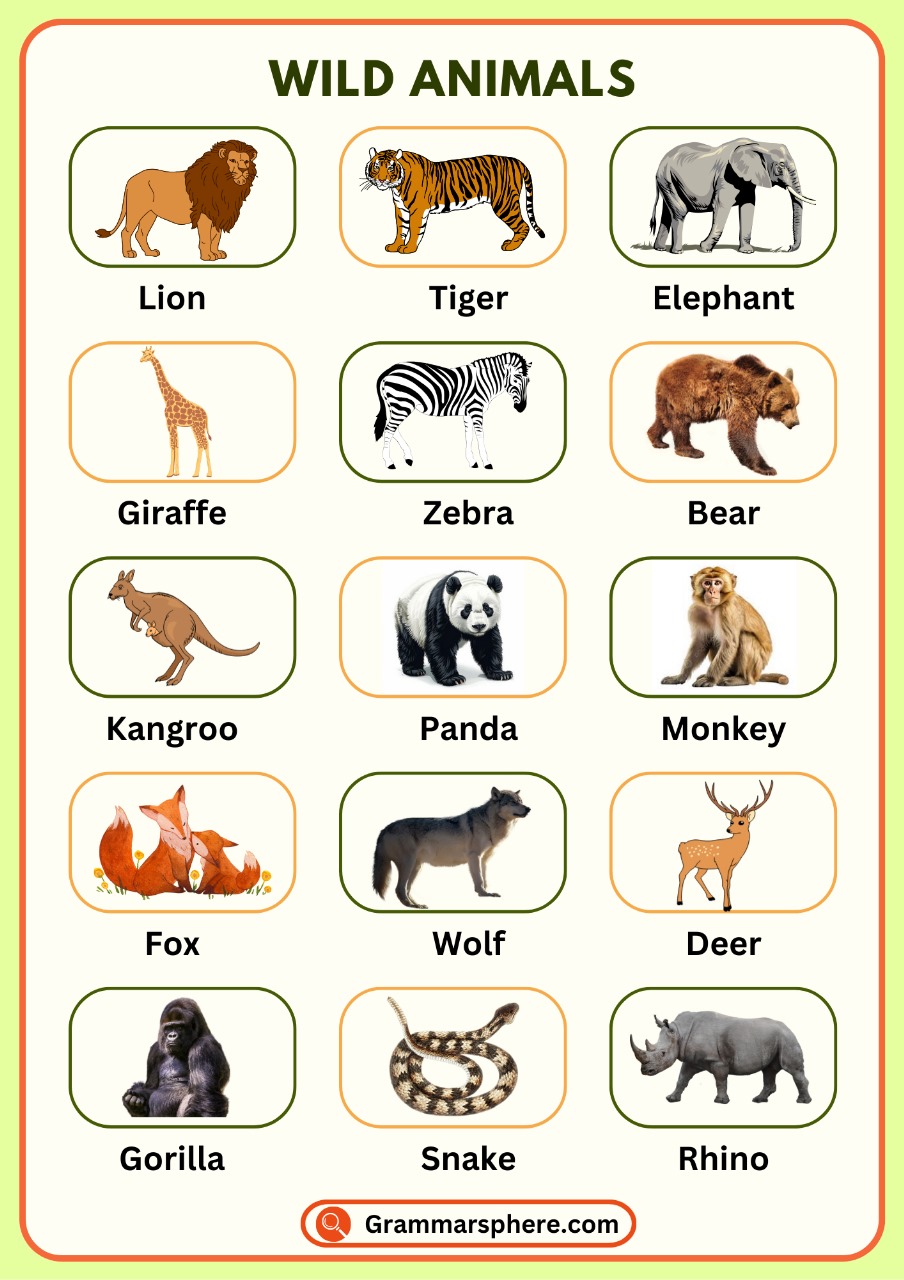
Wild Animals with Descriptions
Lion
The lion is a large and powerful big cat, known as the “king of the jungle.” It lives in prides, hunts other animals for food, and has a loud roar that can be heard from miles away.
Tiger
The tiger is the largest cat species, famous for its orange coat with black stripes. It is a solitary hunter and swims well, often found in forests and grasslands.
Leopard
The leopard is a spotted wild cat known for its strength and ability to climb trees. It hunts both on the ground and in trees, making it an excellent ambush predator.
Cheetah
The cheetah is the fastest land animal, capable of running up to 70 mph. It has a slim body, long legs, and black tear marks on its face that help reduce glare while hunting.
Elephant
The elephant is the largest land animal, recognized by its long trunk, large ears, and tusks. It is highly intelligent and lives in herds, using its trunk for eating, drinking, and communication.
Giraffe
The giraffe is the tallest animal on Earth, with a long neck and legs that help it reach leaves on tall trees. Its spotted coat acts as camouflage in the wild.
Zebra
The zebra is a horse-like animal with unique black-and-white stripes that help confuse predators. It lives in groups and grazes on grass in savannas and grasslands.
Rhinoceros
The rhinoceros is a large, heavy animal with thick skin and one or two horns on its snout. It eats plants and prefers grassy or swampy areas for survival.
Hippopotamus
The hippopotamus is a massive, water-loving animal with short legs and big teeth. It spends most of its time in rivers or lakes and is surprisingly fast on land.
Deer
The deer is a gentle, herbivorous animal with antlers on the males. It lives in forests or meadows and uses its speed to escape predators.
Wolf
The wolf is a wild predator related to dogs, known for hunting in packs. It howls to communicate and preys on animals like deer and smaller mammals.
Fox
The fox is a small, clever animal with a bushy tail and sharp features. It hunts small animals and birds, often living in forests or near human settlements.
Bear
The bear is a large mammal with thick fur, known for its strength and ability to adapt. Some bears eat fish and meat, while others like the panda eat mainly bamboo.
Dolphin
The dolphin is a highly intelligent sea mammal known for its playful nature. It communicates through clicks and whistles and lives in pods (groups).
Whale
The whale is the largest animal on Earth, living entirely in the ocean. It breathes air through a blowhole and feeds on tiny organisms or fish, depending on the species.
Penguin
The penguin is a flightless bird that waddles on land but swims skillfully in the water. It lives in cold regions, such as Antarctica, and feeds on fish and krill.
Owl
The owl is a nocturnal bird with large eyes and excellent hearing. It hunts small animals at night and is known for its ability to turn its head almost completely around.
Eagle
The eagle is a powerful bird of prey with sharp claws and a strong beak. It flies high in the sky and hunts animals like fish and small mammals.
Crocodile
The crocodile is a large reptile with a long, strong jaw and tough scaly skin. It lives in rivers or swamps and hunts by ambushing its prey near the water.
Snake
The snake is a legless reptile that moves by slithering. Some snakes are venomous and use their fangs to hunt, while others squeeze their prey.
Frog
The frog is an amphibian that lives both in water and on land. It has smooth skin, long legs for jumping, and lays eggs in water, where its young grow into tadpoles.
Turtle
The turtle is a reptile with a hard shell that protects it from predators. It lives in water or on land and can retract its head and limbs inside the shell when in danger.
Shark
The shark is a powerful sea predator with sharp teeth and a keen sense of smell. It comes in many sizes, from the small reef shark to the giant whale shark.
Piranha
The piranha is a small but fierce freshwater fish known for its sharp teeth and strong jaws. It often feeds in groups, quickly devouring prey in rivers.
Wild Animals and Their Facts
Mammals:
Lion
- Known as the “King of the Jungle.”
- Live in prides, which are groups of about 10–15 lions.
- A lion’s roar can be heard from up to 8 km away.
Elephant
- Largest land animal on Earth.
- Highly intelligent with excellent memory.
- Use their trunks for breathing, eating, drinking, and communication.
Tiger
- Largest species in the cat family.
- Striped coat is unique to each tiger, much like a fingerprint.
- Excellent swimmers and often hunt in water.
Giraffe
- Tallest mammal on Earth, with necks up to 6 feet long.
- Their tongues can be up to 20 inches long to help grab leaves.
- Only need to drink water every few days.
Kangaroo
- Native to Australia and can leap over 30 feet in one jump.
- Have a pouch to carry their young, called joeys.
- Cannot walk backward.
Wolf
- Live and hunt in packs with a clear social hierarchy.
- Can run up to 64 km/h (40 mph).
- Howling helps them communicate across long distances.
Birds:
Eagle
- Powerful birds of prey with excellent eyesight.
- Can spot prey from up to 3 km away.
- Build the largest nests of any bird species.
Penguin
- Flightless birds that are excellent swimmers.
- Found primarily in the Southern Hemisphere, especially Antarctica.
- Have a thick layer of blubber and waterproof feathers for insulation.
Owl
- Known for their silent flight and exceptional night vision.
- Can rotate their heads up to 270 degrees.
- Symbolic in many cultures as a sign of wisdom.
Peacock
- Male peacocks display their iridescent tail feathers to attract females.
- Known as “peafowl” collectively; males are peacocks, and females are peahens.
- Their feathers are shed and regrown annually.
Reptiles:
Crocodile
- Have existed for over 200 million years, making them ancient reptiles.
- Powerful bite force, but they cannot chew their food.
- Can hold their breath underwater for more than an hour.
Snake
- Use their forked tongues to sense their environment.
- Some species, like the king cobra, can grow up to 18 feet long.
- Pit vipers and other venomous snakes use heat-sensitive pits to detect prey.
Tortoise
- Among the longest-living animals, with some living over 150 years.
- Herbivorous and slow-moving, with shells for protection.
- Can store water in their bodies to survive in dry climates.
Aquatic Animals:
Dolphin
- Highly intelligent and social animals.
- Communicate through clicks, whistles, and body movements.
- Can recognize themselves in mirrors, showing self-awareness.
Shark
- Over 500 species, ranging from small dwarf lantern sharks to massive whale sharks.
- Replace their teeth continuously throughout their lives.
- Apex predators with incredible senses of smell.
Octopus
- Have three hearts and blue blood.
- Master of camouflage, changing color and texture to blend in with surroundings.
- Highly intelligent, capable of solving puzzles and escaping enclosures.
Whale
- Blue whale is the largest animal ever to exist, reaching up to 100 feet in length.
- Humpback whales are known for their complex songs.
- Baleen whales use comb-like structures to filter feed on plankton.
Insects:
Butterfly
- Go through four life stages: egg, larva, pupa, and adult.
- Taste with their feet to detect the sweetness of plants.
- Monarch butterflies migrate thousands of miles annually.
Bee
- Essential pollinators responsible for the growth of many plants.
- Communicate through a dance called the “waggle dance.”
- Only female bees can sting.
Ant
- Live in highly organized colonies led by a queen.
- Can carry up to 50 times their own body weight.
- Some species “farm” fungi for food.
Amphibians:
Frog
- Use their skin for respiration along with their lungs.
- Known for their jumping ability and loud calls during mating.
- Some frogs can survive being frozen during winter.
Salamander
- Capable of regenerating lost limbs and even parts of their heart or brain.
- Prefer moist environments and are nocturnal.
- Some species are entirely aquatic.
Arthropods:
Spider
- Spin silk from their spinnerets to create webs.
- Most are harmless to humans, despite their fearsome reputation.
- Play a crucial role in controlling insect populations.
Scorpion
- Have a venomous stinger at the end of their tail.
- Glow under ultraviolet light due to a substance in their exoskeleton.
- Can survive harsh environments, including deserts.
Wild Animal Habitats Vocabulary
Forest
Forests are areas filled with trees, plants, and a variety of wildlife. They provide shelter and food for many animals and can be tropical, temperate, or boreal (cold).
Desert
Deserts are dry areas with little rainfall and extreme temperatures. Some are hot with sand dunes, while others are cold with snow-covered ground.
Grassland
Grasslands are open spaces covered mostly with grasses. They can be savannas in warmer regions with scattered trees or prairies in temperate zones.
Ocean
Oceans are vast bodies of saltwater that cover most of the Earth. They support diverse marine life, from shallow coral reefs to the deep sea.
Freshwater
Freshwater habitats include rivers, lakes, ponds, and wetlands. These areas have water with low salt content and support many plants and animals.
Mountain
Mountains are tall, rocky areas often covered with snow at higher altitudes. Wildlife here adapts to cold and rugged conditions.
Arctic/Polar
Arctic and polar regions are icy, cold areas near the poles. They include tundras, which are treeless plains, and ice sheets that are frozen year-round.
Rainforest
Rainforests are dense, warm, and wet forests with the highest biodiversity. They are found near the equator and are home to countless species.
Savanna
Savannas are grassy areas with scattered trees, found in tropical regions. They have wet and dry seasons and support large herbivores and predators.
Tundra
Tundras are cold, treeless regions where the ground is often frozen. Only hardy plants and animals can survive in these conditions.
Coral Reef
Coral reefs are underwater ecosystems made of coral structures. They are rich in marine life and thrive in warm, shallow ocean waters.
Wild Animal Adaptations
Thick Fur to Survive Cold
Many animals, such as polar bears, have thick fur to survive in freezing temperatures. The fur traps air, creating an insulating layer that keeps them warm even in extreme cold.
Camouflage for Protection
Animals like the chameleon and snow leopard can blend into their surroundings. This adaptation helps them hide from predators or sneak up on prey without being noticed.
Sharp Claws for Hunting
Tigers and eagles have sharp claws that help them catch and hold their prey. These claws are strong and curved, making hunting easier and more efficient.
Long Neck to Reach Food
The giraffe has a long neck to reach leaves on tall trees in the African savanna. This adaptation allows giraffes to eat food that other animals cannot reach.
Webbed Feet for Swimming
Animals like ducks and otters have webbed feet that help them swim. This adaptation makes it easier to move quickly through water while hunting or escaping predators.
Fat Storage for Survival
Camels can store fat in their humps, which helps them survive for long periods without food and water in deserts. This adaptation is essential in harsh, dry climates.
Poisonous Venom for Defense
Some snakes, such as the cobra, have venom that they use to kill prey or protect themselves from predators. This adaptation ensures their survival in dangerous environments.
Strong Beaks for Cracking Nuts
Birds like parrots have strong, curved beaks to crack open hard nuts and seeds. This adaptation allows them to access food sources that are otherwise difficult to eat.
Hibernation to Save Energy
Animals like bears hibernate during the winter. They slow their body processes and live off stored fat, helping them survive when food is scarce.
Sharp Teeth for Eating Meat
Carnivores like lions have sharp teeth for tearing meat. Their strong jaws and teeth allow them to eat large prey efficiently.
FAQS About Wild Animals
What are the 10 wild animals names?
Here are the names of 10 wild animals: lion, tiger, elephant, giraffe, zebra, leopard, wolf, bear, fox, and deer.
What are wild animals in simple words?
Wild animals are animals that live in nature, such as forests, jungles, or oceans, and take care of themselves. They are not kept as pets or on farms. Examples include lions, tigers, elephants, and wolves.
What is the basic terminology of wildlife?
Wildlife refers to undomesticated animals, plants, and organisms in their natural habitats. Key terms include habitat (natural home), adaptation (survival changes), ecosystem (living community), biodiversity (variety of life), predator (hunter), prey (hunted), and conservation (protection efforts)
How do you describe a wild animal?
A wild animal is an animal that lives and survives in its natural habitat without direct human care. These animals find their own food, shelter, and water, and they adapt to their environment to protect themselves from predators and harsh conditions
You May Also Like

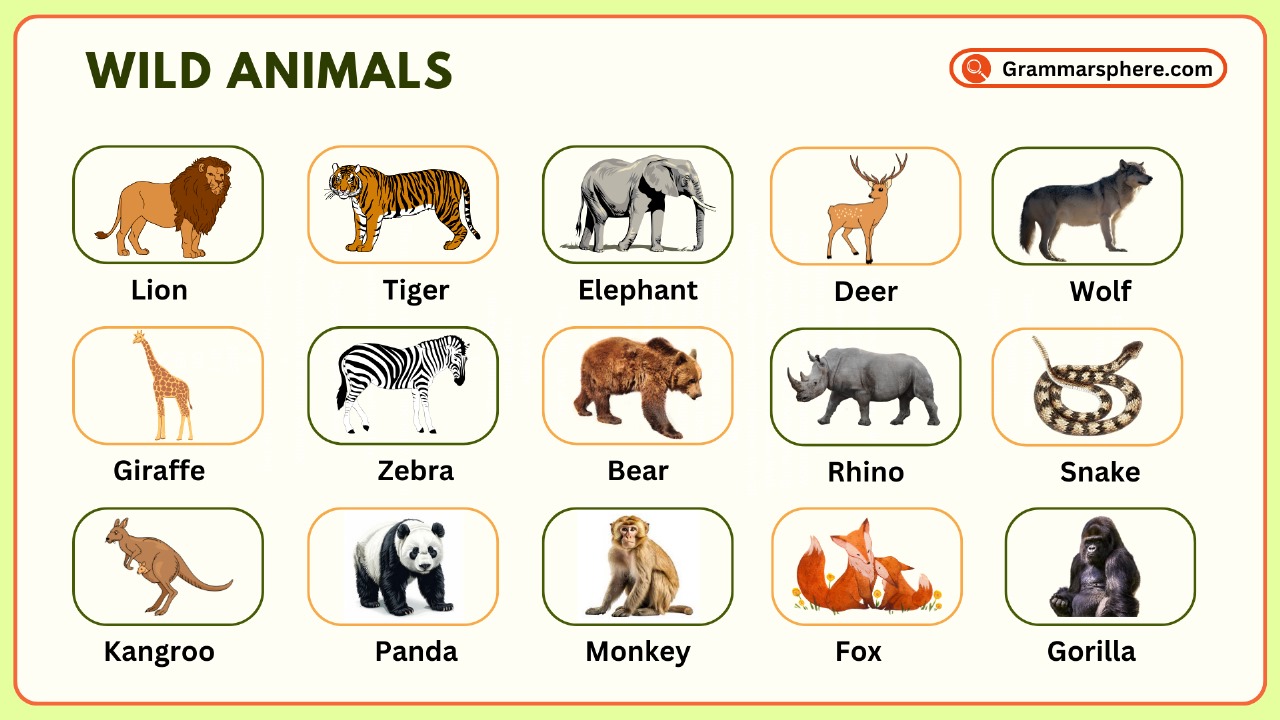
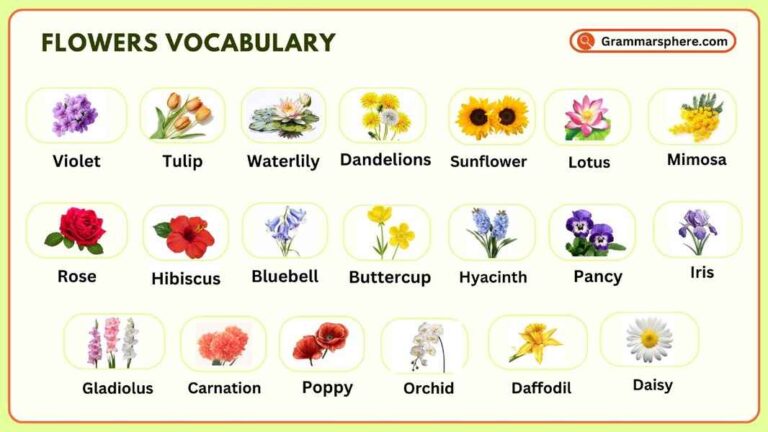
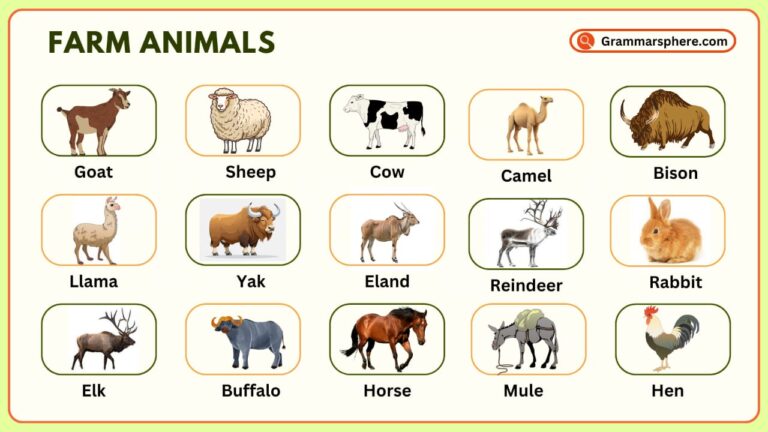
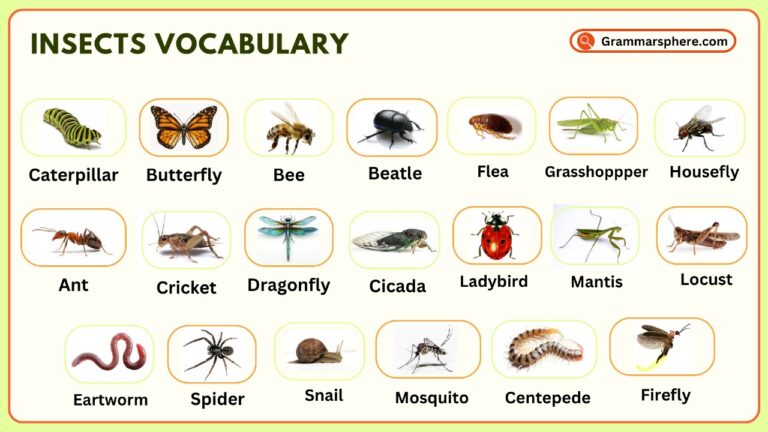
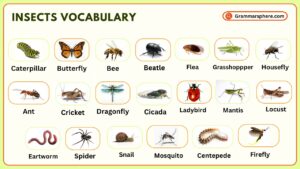


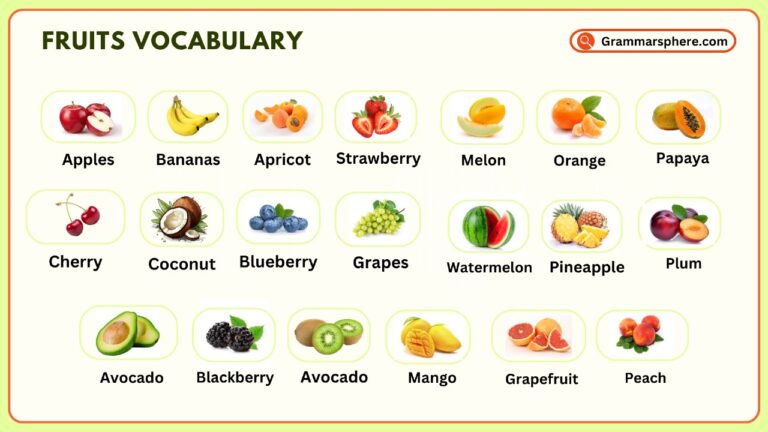
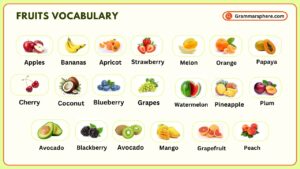
Leave a Comment